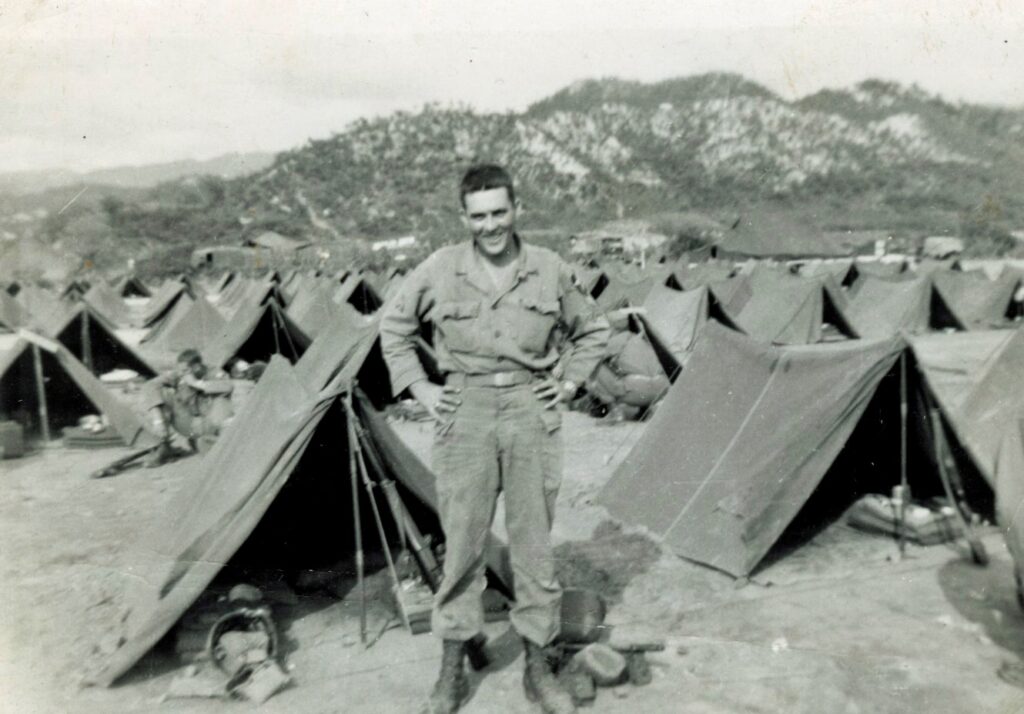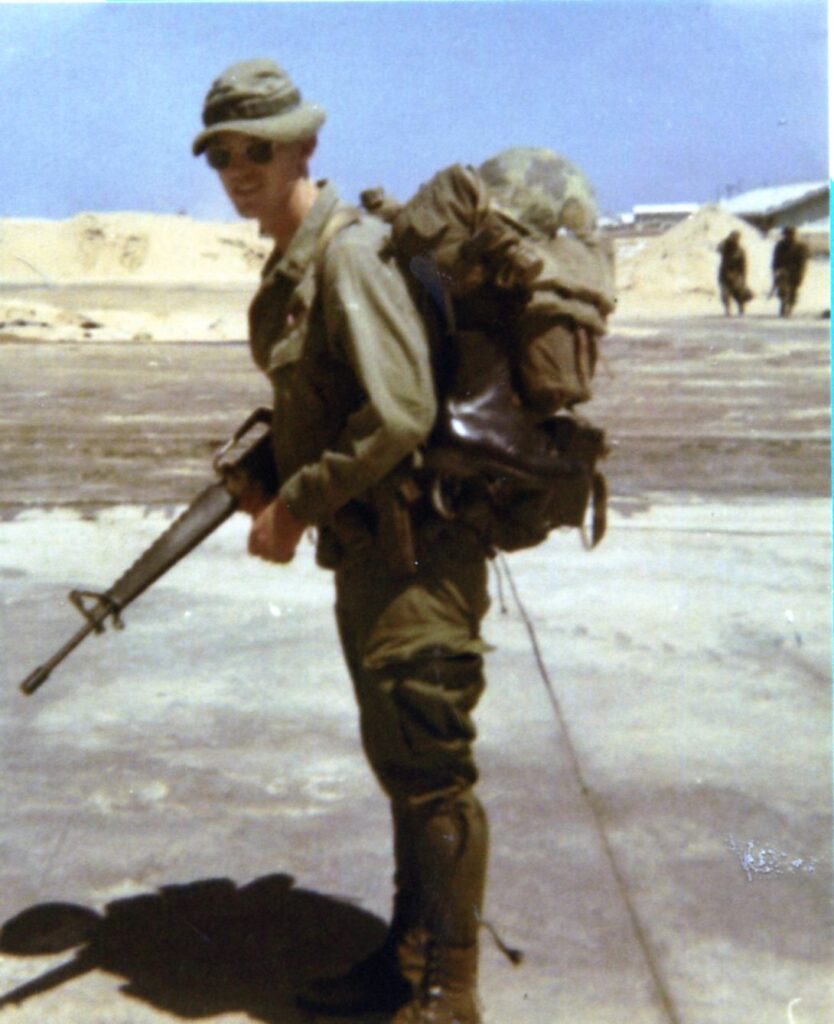This article continues the Kinsley Library’s tribute to our Edwards County veterans that was begun last week. These stories of the Korean, Vietnam and Desert Storm Wars are drawn from the library archive which contains records, files, interviews and images that reflect their sacrifices.
Kenny Bartman (1929-2019) served in the army during the Korean War. “I spent 105 days on the front line in one stretch. Our regimental command, the marines had been up there and spent 100 days, so we had to go up there and spend 105 to beat their record. That was a long stinkin’ time up there. I remember, we got one change of clothes in that 105 days…it was terrible…. I remember when I first went up there, I had a white t-shirt on. I kept tearing a little hunk off of it to clean my rifle. Finally, there wasn’t anything left of it. So I ended up with just the fatigue jacket and no t-shirt underneath it. It was getting cold up there. I don’t know for sure, end of October, first of November, before we got any winter clothes. It was getting cold! But we survived it; I don’t know how.”

Dr. Galen Boehme assigned his Composition II students at KHS to interview a veteran for the Library of Congress Veteran Project. Beth Strong and Travis Wetzel interviewed Chuck Fuller in 2005. This is an excerpt from their interview. “In July, 1971, I went to Vietnam as an E5 squad leader. They told me once I got there that I would probably be there for a month before I would be out in charge of a squad so I could get oriented with the country…. I was there two or three days for processing and then they shipped me into the 101st Airborne Division to replace a squad leader due to leave. The day that I got there was the day that he left. I only got a brief orientation. I was put in charge of a good group of guys that had been there for six to eight months. We were an infantry combat unit. We loaded into helicopters and were dropped off in the middle of the jungle…. There is lots of jungle in Vietnam, called triple canopy jungle … real dense, real thick, not everywhere, but a lot of it. It meant that it was half-dark in the middle of the day. So, every day, we took machetes and cut trail wherever we went. We set up camp, consisting of a perimeter with two squads before dark. Once it got dark in a triple canopy area, you couldn’t see your hand in front of your face. Once we set up camp, no fires were allowed; everyone had their turn on the rotation guard duty with both squads guarding their own half of the circle…. I saw my share of combat and that’s all I’m going to tell you about that.”

Jim Neese spent a total of twenty years in service. He was in boot camp during the last days of the Korean War and served for three years. He was out for two years and then served in the air force as an instructor in Alaska during the Vietnam War. He was out for nine years before rejoining the same National Guard unit where his son and daughter were serving. All three were sent to Saudi Arabia to serve in Desert Storm.
In a 2006 interview conducted by Kellen Ebert and Emily Keehbauch, Neese explained that he was a mechanic and did a lot of different jobs. “We converted buses to transportation, prisoner transportation. We washed vehicles; we washed tanks, set up wash racks…. But the only taste of actual war was one time a SKUD missile came right over the barracks. And the engine blew off right dead over the barracks…. (There) was a metal building where the Pennsylvania Transportation group had just arrived, and most of them were in that building. That SKUD hit dead center, right in the center of that building. It took it out totally, killed 27 guys. And then we got involved because the building we were in…was built to be a hospital. But in fact, it had never been used as a hospital…. We used it for a barracks…. Anyhow everybody, all the rest of the troops around, thought it was a hospital. So when those Pennsylvanians were missing arms, missing legs, they were in terrible shape, believe me. And they put them in deuce-and-a-halves (army) trucks and brought them to our building, thinking they were coming to a hospital. But as it did happen we had one unit that was a helicopter rescue team. They were medically trained and they were up on the top floor. And there were about nine or ten people in that unit. They helped out quite a bit. But otherwise, the hospital was two and a half miles south of us, the actual hospital. So anyway, our unit got a good taste of what it is like to be in war. When you see bodies, and see guys die right there while you are trying to help them with missing arms and legs and stuff, it’s a real awakening of what war is all about.”
These stories and many others in the library archive are accessible online or in the library. They remind us of why we say, “Thank you for your service.”
I would like to repeat my challenge from last week and ask everyone to find time to discover and share the stories of veterans with your family, your children, and the library archive. You may have ancestors who fought in the American Revolution or Civil War. The library staff can help you with resources to discover them. Many grandfathers fought in WWII, Korea, and Vietnam. Is there a family record of their service? Preserving their stories is a way to create a lasting memorial that honors their service.
